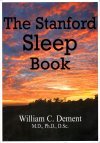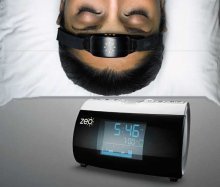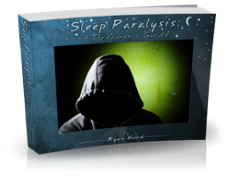
| Connect & Subscribe |
Narcolepsy Brochure
An Outreach Project by Chris Trader | Return To Outreach Projects 2010
The following is a brochure created for Stanford Sleep and Dreams. If it is difficult to read using the images, you may view the text here. Unfortunately, there is no download available for this brochure.
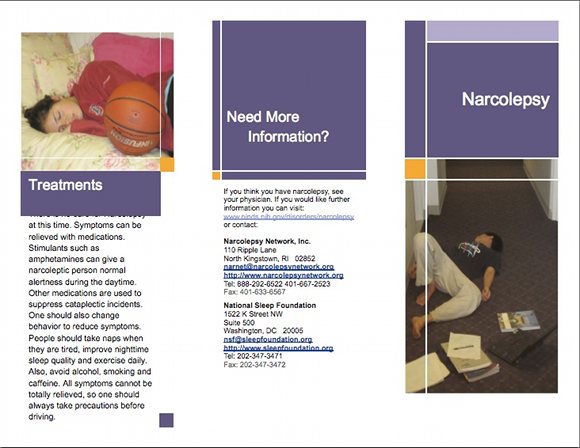
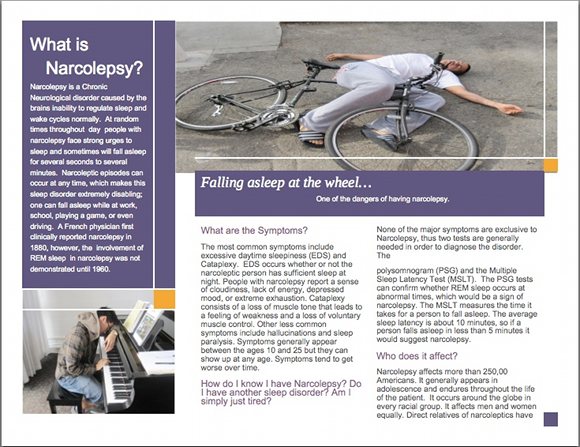
What is Narcolepsy?
Narcolepsy is a Chronic Neurological disorder caused by the brains inability to regulate sleep and wake cycles normally. At random times throughout day people with narcolepsy face strong urges to sleep and sometimes will fall asleep for several seconds to several minutes. Narcoleptic episodes can occur at any time, which makes this sleep disorder extremely disabling; one can fall asleep while at work, school, playing a game, or even driving. A French physician first clinically reported narcolepsy in 1880, however, the involvement of REM sleep in narcolepsy was not demonstrated until 1960.
What are the Symptoms?
The most common symptoms include excessive daytime sleepiness (EDS) and Cataplexy. EDS occurs whether or not the narcoleptic person has sufficient sleep at night. People with narcolepsy report a sense of cloudiness, lack of energy, depressed mood, or extreme exhaustion. Cataplexy consists of a loss of muscle tone that leads to a feeling of weakness and a loss of voluntary muscle control. Other less common symptoms include hallucinations and sleep paralysis. Symptoms generally appear between the ages 10 and 25 but they can show up at any age. Symptoms tend to get worse over time.
How do I know I have Narcolepsy? Do I have another sleep disorder? Am I simply just tired?
None of the major symptoms are exclusive to Narcolepsy, thus two tests are generally needed in order to diagnose the disorder. The polysomnogram (PSG) and the Multiple Sleep Latency Test (MSLT). The PSG tests can confirm whether REM sleep occurs at abnormal times, which would be a sign of narcolepsy. The MSLT measures the time it takes for a person to fall asleep. The average sleep latency is about 10 minutes, so if a person falls asleep in less than 5 minutes it would suggest narcolepsy.
Who does it affect?
Narcolepsy affects more than 250,00 Americans. It generally appears in adolescence and endures throughout the life of the patient. It occurs around the globe in every racial group. It affects men and women equally. Direct relatives of narcoleptics have an increased risk of developing the disease. Other factors such as infection, immune-system dysfunction and trauma may be a cause. Narcolepsy is underrecognized and underdiagnosed.
Treatments
There is no cure for Narcolepsy at this time. Symptoms can be relieved with medications. Stimulants such as amphetamines can give a narcoleptic person normal alertness during the daytime. Other medications are used to suppress cataplectic incidents. One should also change behavior to reduce symptoms. People should take naps when they are tired, improve nighttime sleep quality and exercise daily. Also, avoid alcohol, smoking and caffeine. All symptoms cannot be totally relieved, so one should always take precautions before driving.
Need More Information?
If you think you have narcolepsy, see your physician. If you would like further information you can visit: www.ninds.nih.gov/disorders/narcolepsy or contact:
Narcolepsy Network, Inc.
110 Ripple Lane
North Kingstown, RI 02852
http://www.narcolepsynetwork.org
Tel: 888-292-6522 401-667-2523
Fax: 401-633-6567
National Sleep Foundation
1522 K Street NW
Suite 500
Washington, DC 20005
http://www.sleepfoundation.org
Tel: 202-347-3471
Fax: 202-347-3472
About This Site
Welcome! This site is continuously being created by students of Dr. William C. Dement's Sleep And Dreams course at Stanford University.
We made this site as a call to action for people all over the world to live healthier, happier, safer, and more productive lives by learning about their own sleep. We have faith that reading the information provided on this site will motivate you to be smart about your sleep deprivation and strategic about your alertness in order to live life to your fullest, most energetic potential.
In fact, we challenge you to do so! What do you say, are you up for the challenge?
Interviews With Sleep Specialists: Insights Into the Worlds of Sleep Medicine & Sleep Business
America's Most Dangerous Disorder: What Is Sleep Apnea Doing To Your Sleep?
Sleep Debt: How Much More Will You Achieve When You Reduce Yours?
The Stages Of Sleep: The Journey Through The Night
Delayed Sleep Phase: You Want To Sleep But You're Not Tired Yet
Paralyzed at Night: Is Sleep Paralysis Normal?
Sleep In Words: Smart, Strange, and Funny Quotes About Sleep
Sleep Disorders In Children: What's Keeping Your Child From A Full Night's Rest?
Attacks of Pavor Nocturnus (a.k.a. Sleep Terrors, Night Terrors, or Incubus Attacks)
The Stanford Sleep Book
Dr. Dement's pioneering textbook has been the core text for Sleep and Dreams since 1980, but it has just recently been made available to the wider public for the first time.
In it you'll find a more detailed account of the most important things you need to know about sleep, alertness, dreams, and sleep disorders. Studies, statistics, plus plenty of Dr. Dement's classic anecdotes painting the history of sleep medicine.
Preface | Intro | Contents | Get A Copy
More Sleep Resources
The Zeo
A revolution in personal sleep tracking, the Zeo is a wireless headband that transmits your brainwaves in realtime to a dock (pictured here) or your smartphone. The result? You can wake up and see exactly what stages of sleep you were in during the night! Unprecedented personalized sleep knowledge.
Sleep Paralysis: A Dreamer's Guide
Ever woken up paralyzed? A surprising number of us have, believe it or not. But few know the actual causes of this phenomenon, and fewer still how to exert control over it. Dream researcher and sleep paralysis expert Ryan Hurd shares breakthrough insights into how to do just that.
Important Disclaimer
Please Note:
The information found on this page and throughout this site is intended for general information purposes only. While it may prove useful and empowering, it is NOT intended as a substitute for the expertise and judgments of healthcare practitioners.
For more info, see our
Terms of Use.







